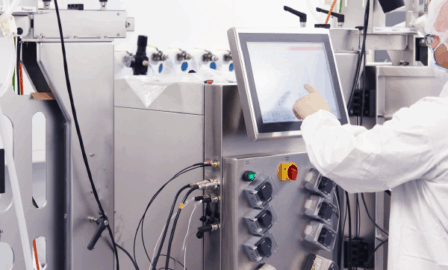Inflation’s Impact on the Pharmaceutical Industry
Post-pandemic spending, federal relief packages, supply chain issues, and a host of other factors have contributed to rising prices. Extreme inflation rates of 9.1% in June and 8.5% in July challenge consumers and companies alike to manage budgets effectively. This is significant for the life sciences industry, which must contend with rising supply and production costs for existing pharmaceuticals, potential price ceilings on federally regulated drugs, and consumers with shrinking spending power. Below, we outline some of the most important considerations for firms dealing with inflation’s impact on the pharmaceutical industry.
Consumer Outlook
It’s important for pharmaceutical companies to consider the perspective of consumers who are also dealing with higher prices. The money that households use for healthcare goods and services comes from the same pocket as that for gasoline, groceries, rent, and mortgage payments. Noticeably, spending at grocery stores is up nearly 9% and gas is up 43% from June of 2021. Similarly, a surge in housing prices of over 20% has forced some prospective home buyers to cut back on purchasing a home.
This comes amongst a blend of domestic and global factors that ultimately muddy the water for predicting future consumer spending habits. Some consumers may be anticipating inflated prices to continue for the long term and thus cut back on spending. Others may be more willing to spend on entertainment and travel to make up for lost time during the pandemic. Regardless, the portion of the household budget that’s available for expensive pharmaceuticals is slimming as prices rise across the board.
Consequently, consumers may be looking away from name brands and utilizing drug-savings platforms like GoodRx, which provides information about drug prices and free coupons. Pharmaceutical companies thus need to make headway in DTC channels as consumers seek the most cost-efficient ways to stretch budgets.
Inflation Reduction Act
The Inflation Reduction Act passed in August of 2022 serves to fight inflation and invest into important sectors like domestic energy production and manufacturing. It also includes a number of provisions that directly affect the life sciences industry:
Insulin Cap: The Act includes a $35 per month ceiling on out-of-pocket costs for insulin for the 18.4% of Americans insured by Medicare. While this is significant because it provides a federal mandate to life science companies for insulin pricing, it does not apply to those insured commercially. For the 1 in 3 Americans that have diabetes and are insured by Medicare, it will certainly help to reduce healthcare costs.
Drug Price Negotiation: Beginning in 2026, the Centers for Medicare and Medicaid Services will be allowed to negotiate drug prices with pharmaceutical companies. This policy will begin with 10 drugs but may be expanded in later years if it effectively reduces the costs faced by consumers and federal programs. It’s significant for pharmaceutical companies who must now contend with potentially lower prices on their drugs especially if inflation persists into the latter half of the decade.
Medicare Part D Cap: The Act includes a $2,000 ceiling on Medicare Part D cost sharing beginning in 2025. This should especially benefit consumers with Part D coverage who are being treated with cancer drugs, which are rising in cost.
These provisions take major steps to reducing government spending on large healthcare programs. Consequently, inflation should gradually slow which eases financial pressures on both consumers and firms. Pharmaceutical companies are contending with increased federal regulation and shrinking profit margins as both consumers and government programs reduce spending.
Pharmaceutical Outlook
Higher input costs and ceilings on federally regulated drugs mean that profit margins are gradually shrinking for life sciences companies. Combined with labor shortages and supply chain issues, firms are facing new challenges at every level. Beginning with R&D, procurement, and manufacturing, firms should look to get ahead of these issues by truly understanding their demand and refining their processes to account for increased lead times and pricing.
Pharmaceutical companies should optimize spending and resource usage through every level of the pharma value chain as factors that contribute to these problems appear to persist. The implementation of the Inflation Reduction Act may eventually help firms dealing with inflated costs, but in the short term could hurt margins as prices are negotiated down by the CMS.
Platforms like GoodRx may be rising stars as DTC channels to assist with marketing, distribution, and selling. As consumers try to save money, traffic on these websites increases. Consequently, strategic advertising on drug-savings websites can help consumers associate those drugs with the website’s cost savings. This can be a significant advantage as consumers may steer away from name brands in search of generics to stretch budgets further amidst ongoing inflation.
Looking Forward: Inflation’s Impact on the Pharmaceutical Industry
Ultimately, it’s uncertain how long inflation will continue. Life sciences companies can only control how they manage budgets, cut operating costs, and gain advantages in marketing spaces. These initiatives can help companies mitigate the impacts of inflation while continuing to optimize spending. Contact our team of life sciences consulting experts today to learn more about best practices for managing inflation.
Contributions from Jake Park-Walters




